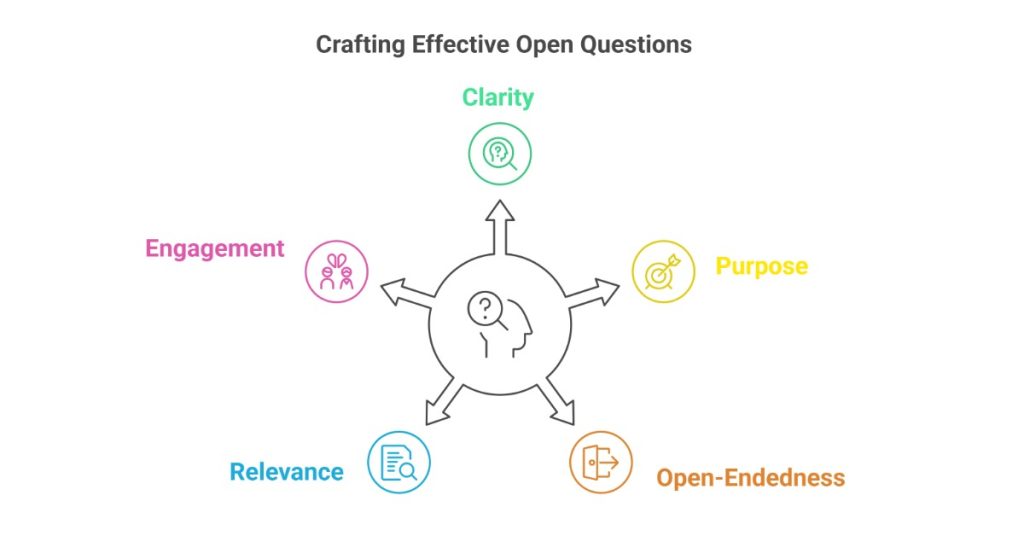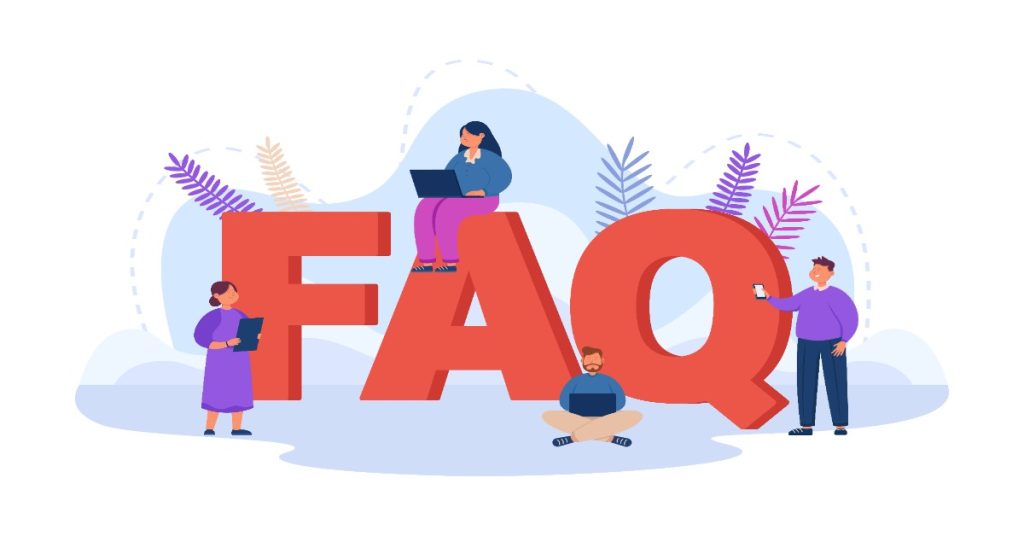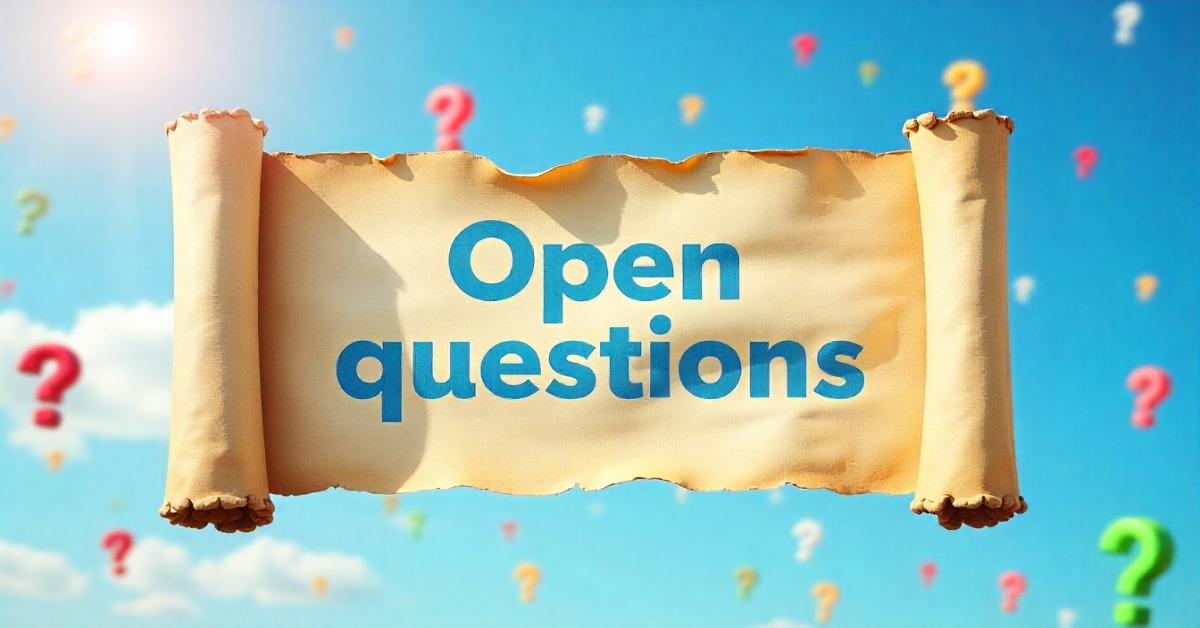Open questions are powerful tools for sparking discussion, deepening understanding, and fostering engagement in educational, professional, and personal settings. Unlike closed questions, which elicit short, specific answers, open questions encourage detailed responses, critical thinking, and creativity. This comprehensive guide explores how to craft and use open questions effectively in 2025, provides 50 diverse examples across various contexts, and shares expert strategies to maximize their impact while adhering to EEAT principles.
Table of Contents
Why Open Questions Are Essential
Open questions invite exploration and dialogue, making them invaluable in teaching, coaching, interviewing, and everyday communication. They encourage respondents to share insights, opinions, and experiences, revealing more than simple facts. In 2025, with collaborative learning and emotional intelligence gaining prominence, mastering open questions is a critical skill for educators, leaders, and communicators.
Their versatility makes open questions suitable for classrooms, workplaces, therapy sessions, and casual conversations. However, poorly phrased questions can lead to vague or off-topic responses. This guide will help you design open questions that are clear, purposeful, and effective.
What Makes an Open Question?
An open question typically begins with words like “how,” “why,” “what,” or “describe” and cannot be answered with a simple “yes” or “no.” It prompts elaboration and invites the respondent to reflect or analyze. For example: “How would you approach solving this problem?” encourages a detailed explanation, unlike “Did you solve the problem?” which requires only a brief response.
The goal is to spark curiosity and engagement while aligning with your objective, whether it’s assessing knowledge, building rapport, or encouraging problem-solving. Let’s explore how to craft open questions that achieve these goals.
Key Principles for Crafting Effective Open Questions
To create impactful open questions, follow these principles:
- Clarity: Use simple, direct language to ensure the question is easily understood.
- Purpose: Align the question with your goal, whether it’s to assess understanding, encourage reflection, or stimulate discussion.
- Open-Endedness: Avoid phrasing that limits responses to a few words; aim for questions that invite expansive answers.
- Relevance: Tailor questions to the context and audience to ensure they resonate and elicit meaningful responses.
- Engagement: Frame questions to spark curiosity or challenge assumptions, encouraging deeper thought.
By adhering to these principles, you can design questions that foster rich, insightful responses.

50 Open Question Examples (Categorized by Context)
Below are 50 open question examples across various domains, showcasing their versatility and application. Each category includes questions designed to stimulate critical thinking, reflection, or discussion.
Education (10 Questions)
Open questions in education promote critical thinking and help teachers gauge student understanding.
- How would you explain the water cycle to a younger student?
- Why do you think historical events like the Industrial Revolution shaped modern society?
- What strategies would you use to solve a complex math problem like this one?
- Describe how a character’s motivations influence the plot of this novel.
- What are the potential consequences of climate change on coastal ecosystems?
- How can scientific discoveries from the past inform future innovations?
- Why do you think some species adapt better to environmental changes than others?
- What steps would you take to design a fair scientific experiment?
- How does learning a new language impact your understanding of other cultures?
- What are the benefits and challenges of using technology in the classroom?
Workplace and Leadership (10 Questions)
Open questions in professional settings encourage collaboration, problem-solving, and leadership development.
- How would you approach improving team collaboration on this project?
- What factors do you consider when prioritizing tasks under tight deadlines?
- Why do you think some employees resist organizational change?
- Describe a time when you overcame a workplace challenge and what you learned.
- How can we foster a more inclusive work environment?
- What strategies would you use to motivate a disengaged team member?
- Why is effective communication critical for successful project management?
- What are the key elements of a successful marketing campaign in 2025?
- How would you handle a conflict between two team members?
- What steps can a leader take to build trust within a remote team?
Coaching and Personal Development (10 Questions)
In coaching, open questions help clients reflect and set goals.
- What does success look like for you in the next five years?
- How do you feel your current habits are impacting your goals?
- Why do you think you’re facing challenges in achieving work-life balance?
- Describe a moment when you felt truly confident and what led to it.
- What steps could you take to overcome your fear of public speaking?
- How do your values influence your decision-making process?
- What motivates you to pursue your current career path?
- Why do you think certain goals feel more challenging than others?
- How can you leverage your strengths to achieve your aspirations?
- What changes would you make to improve your daily productivity?
Interviews and Recruitment (10 Questions)
Open questions in interviews reveal a candidate’s skills, values, and thought processes.
- How would you handle a situation where a client is dissatisfied with your work?
- What inspired you to pursue a career in this industry?
- Describe a project you’re proud of and the impact it had.
- Why do you think you’re a good fit for this role?
- How do you stay updated on industry trends in 2025?
- What approach would you take to lead a diverse team?
- How do you manage stress during high-pressure projects?
- What skills do you hope to develop in this position?
- Describe a time when you had to adapt to unexpected changes at work.
- How would you contribute to our company’s mission?

Therapy and Counseling (10 Questions)
In therapy, open questions encourage emotional exploration and self-awareness.
- How do you feel when you’re faced with a difficult decision?
- What does a fulfilling life mean to you?
- Why do you think certain emotions are harder for you to process?
- Describe a time when you felt truly supported by someone.
- How do past experiences influence your current relationships?
- What strategies help you cope with stress or anxiety?
- Why do you think you react strongly to certain situations?
- How would you describe your relationship with yourself?
- What changes would you like to see in your daily life?
- How do you envision your future if you overcome your current challenges?
How to Use Open Questions Effectively
Crafting open questions is only half the battle; using them effectively requires strategy and adaptability. Here are expert tips to maximize their impact in 2025:
1. Set a Clear Objective
Before asking an open question, define its purpose. Are you assessing knowledge, encouraging reflection, or building rapport? A clear goal ensures the question drives meaningful responses.
2. Create a Safe Environment
Open questions often elicit personal or vulnerable answers. Foster a non-judgmental space where respondents feel comfortable sharing openly, whether in a classroom or therapy session.
3. Use Follow-Up Questions
Probe deeper with follow-up questions like “Can you elaborate?” or “What makes you say that?” This encourages richer responses and shows active listening.
4. Tailor to Your Audience
Consider the respondent’s knowledge level, cultural background, and context. For example, ask simpler questions for beginners and more complex ones for advanced learners.
5. Balance Open and Closed Questions
While open questions spark discussion, closed questions can clarify specifics. Use a mix to maintain engagement and gather comprehensive insights.
6. Leverage Technology
In 2025, use digital platforms like discussion boards or AI-driven coaching tools to pose open questions asynchronously, allowing respondents time to reflect.
7. Practice Active Listening
When asking open questions, listen attentively to responses. Acknowledge answers with nods, paraphrasing, or affirming comments to build trust and encourage further sharing.

FAQs
1. What is an example of an open question?
An open question invites detailed responses, such as: “How would you approach solving a complex problem in your field?” This encourages explanation rather than a yes/no answer.
2. How do open questions differ from closed questions?
Open questions prompt expansive answers (e.g., “Why do you think this happened?”), while closed questions elicit short, specific responses (e.g., “Did this happen?”). Open questions foster discussion; closed questions confirm facts.
3. Why are open questions important in communication?
Open questions build rapport, encourage critical thinking, and reveal deeper insights. They’re essential for teaching, coaching, and interviews, as they promote dialogue and understanding.
4. How can open questions improve classroom engagement?
Open questions stimulate discussion and critical thinking, encouraging students to share ideas and connect concepts. For example, “What are the implications of this theory?” invites active participation.
5. What are common mistakes when using open questions?
Common mistakes include vague phrasing, asking multiple questions at once, or failing to listen to responses. Ensure clarity and give respondents time to answer thoughtfully.

Common Pitfalls and How to Avoid Them
- Vague Questions: Avoid broad questions like “What do you think?” Instead, ask specific yet open-ended questions like “What factors influenced your decision?”
- Overloading Questions: Don’t combine multiple questions into one, as it confuses respondents. Break complex questions into parts.
- Lack of Context: Provide enough background to make the question relevant. For example, specify the scenario in a workplace question.
- Ignoring Responses: Failing to acknowledge answers can discourage participation. Show engagement through follow-ups or affirmations.
- Cultural Insensitivity: Be mindful of cultural nuances to ensure questions are inclusive and appropriate for diverse audiences.
Open Questions in 2025: Trends and Innovations
In 2025, open questions are evolving with technology and societal shifts. AI-driven platforms analyze responses to open questions, providing insights into learner progress or employee sentiment. Virtual reality (VR) environments use open questions to simulate real-world scenarios, enhancing experiential learning. Additionally, open questions are increasingly used in DEI (diversity, equity, inclusion) training to foster empathy and understanding.
Read More
75+ (MCQs) Multiple-Choice Questions: Examples & Writing Tips (2025)
Likert Scale Examples: 5-Point & 7-Point Question Samples for Effective Surveys
Survey vs Questionnaire: Key Differences, Definitions & When to Use Each
Conclusion
Open questions are a gateway to meaningful conversations, deeper learning, and stronger connections. By crafting clear, purposeful questions and using them strategically, you can unlock insights, spark creativity, and drive engagement in any setting. The 50 examples provided across education, workplace, coaching, interviews, and therapy demonstrate their versatility, while the tips and PAA answers offer practical guidance for 2025. Whether you’re a teacher, leader, or communicator, mastering open questions will elevate your ability to inspire and understand others.
Start experimenting with these examples and strategies today. With practice, you’ll harness the power of open questions to create impactful, human-centered interactions.

